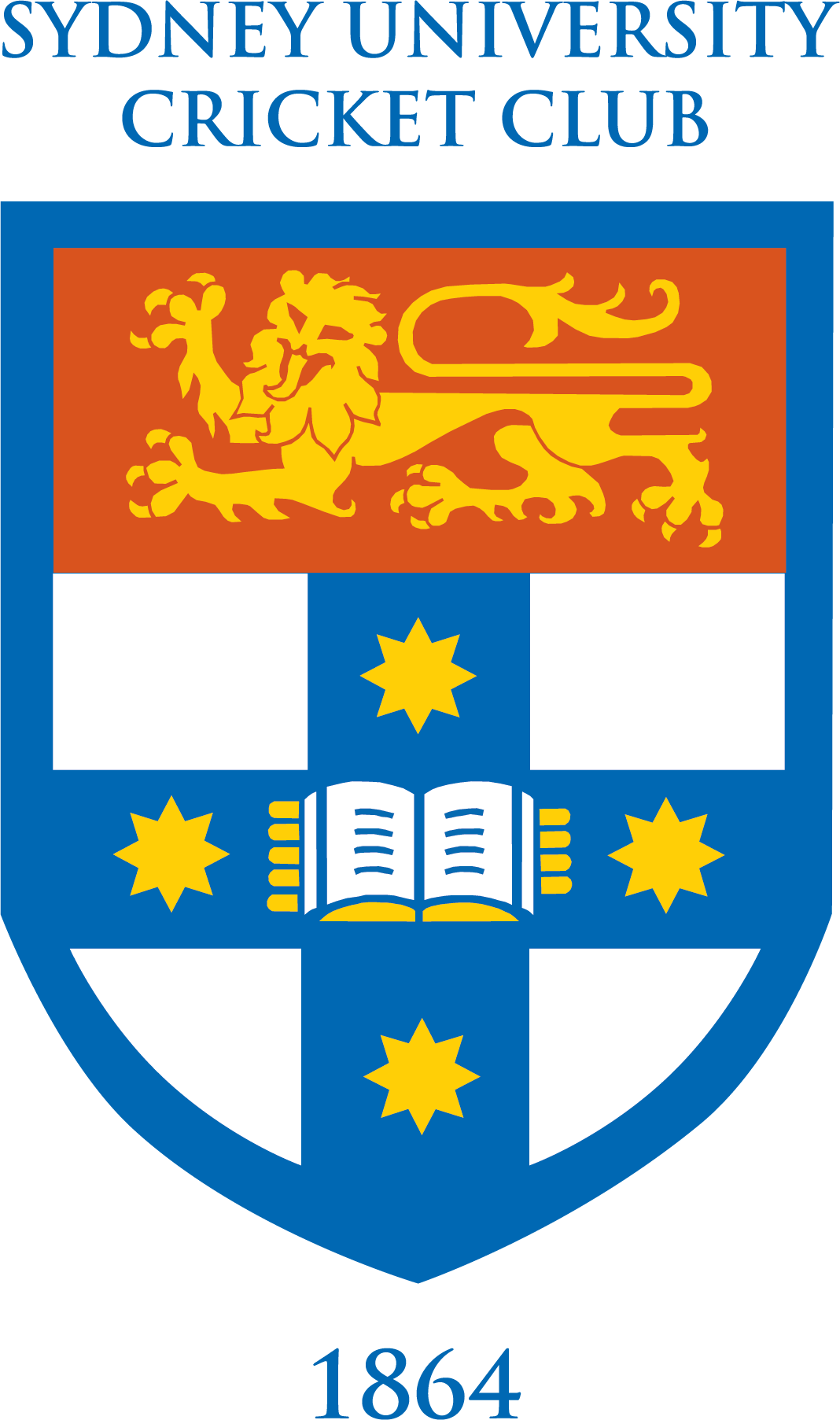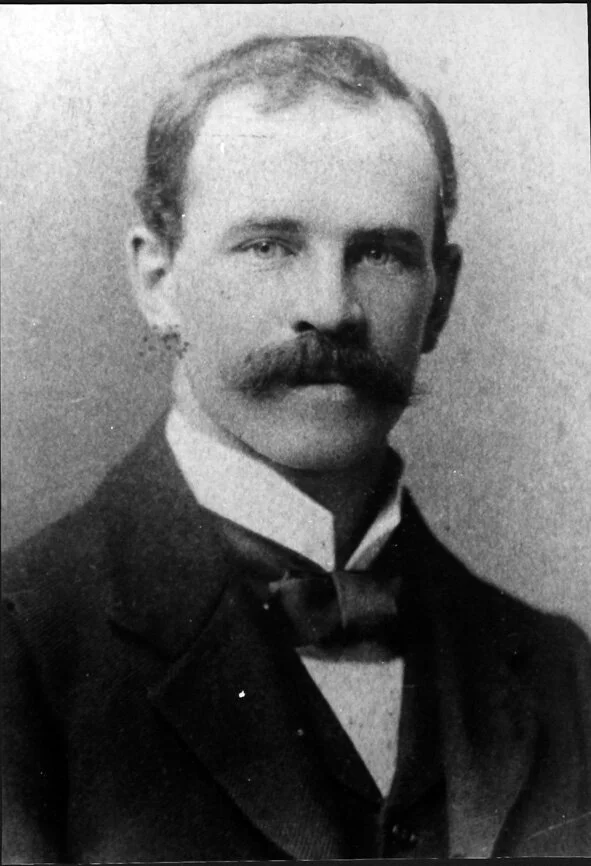Who faced the first ball?
127 years after he played his only game in the First Grade competition for Sydney University, a player whose name has been confused for so many years has now been found.
In the early days of the Grade competition, University’s players were often identified so haphazardly that many have been lost to posterity - including the man who opened the club’s first innings in First Grade. (The club itself, of course, had existed for forty years or more by October 1893: but the competition was new, and remains the one we play in today.)
Walter Charles Fitzmaurice Burfitt was the name of the player who, it has been thought, opened the batting in University’s initial First Grade game in Electorate Cricket (later called ‘Grade Cricket’ and now ‘Premier Cricket’) in October 1893. Burfitt, who was eventually a distinguished surgeon , resided as an undergraduate at St John’s College during the 1890s. He had been a cricketer at school (Riverview) and it would have been reasonable to conclude that it was he who played this game.
But, in various places, the name was given as either ‘BURFITT’ or ‘BURKITT’.
It wasn’t much to go on and Walter Burfitt was listed in the stories of the Sydney University Cricket Club as the more likely player.
Why would this be important? At best, it sounds trivial, obscure, irrelevant.
Except that, whoever this was, appears to have been the University batsman who faced the first ball bowled in University’s initial innings of the first game of Electorate Cricket on the first day (of a three-day game) between University and Glebe at Wentworth Park on 7 October 1893.
Historically, it’s reasonably important to know just who this was.
His partner, who walked out with him to the polite applause of the 2000 spectators after University had dismissed Glebe for 128, was ‘H Moses’. At one time, he was thought to have been the Test cricketer, Harry, who played six Tests between 1886 and 1892. But no, this was Henry C Moses, Harry’s nephew - who has also been difficult to track down. After this, he played one more match for University (3 innings, 36 runs); he didn’t appear to have been an undergraduate; he disappeared from the Club. ‘Burfitt’ or ‘Burkitt’ was caught from the bowling of Andy Newell for 10, didn’t bat in the second innings and played no more.
So, Burfitt or Burkitt?
More research reveals…
EH Burkitt was also a Medical student at Sydney University about this time although Burkitt was eight years older than Burfitt.
In 1892, EH Burkitt had been awarded one of the first twelve University Blues for Rugby. A little more research uncovers these facts:
Edmond Henry Burkitt was born on 14 November 1867 in the village of Charlton in Wiltshire, England, son of Reverend William Esdaile Burkitt (1831-1910), and he was educated at Saugreen preparatory school at Bournemouth and then at Hurstpierpoint, the Anglo-Catholic College in West Sussex. His name appeared three times in the Hurstpierpoint 1st XI in 1882. He and his three brothers emigrated to Australia in 1886. From 1887 until 1890, he was employed to teach at The Kings School, Parramatta.
Why Kings?
It’s not clear but, by coincidence, William Robert Burkitt was Senior Master at Kings from 1868 until 1886. He was an Irishman who came out to Ballarat during the goldrush of the 1850s, and somehow made his way to Kings. A player with the Wallaroo Rugby Club in Sydney, he introduced Rugby Football to Kings in 1870 and is well remembered at the school. One of its Houses is named Burkitt and the Burkitt Shield has been awarded as a senior prize since 1910. WR Burkitt and EH Burkitt appear not to have been related.
Edmond Burkitt entered St Paul’s College at Sydney University and enrolled in Medicine in 1891.
‘Burkitt’ played cricket for University’s Second Eleven (5 innings for 29 runs) and then, in December 1892, playing in the First Eleven and identified clearly as ‘EH Burkitt’, he scored 11 in University’s mammoth score of 496 against the old Warwick Club. In late December 1892, EH Burkitt was named in the practice squad for the intervarsity match in Melbourne, although he did not play in the match the following month.
Then in October 1893, is it Burkitt, not Burfitt, who opens the batting in that historically significant game?
EH Burkitt was Senior Student at St Paul’s in 1894; graduated MB ChM in 1896; married Amy Theodora Hungerford in 1898; practiced medicine for a few years at Coonamble before spending the rest of his life at Dubbo where he and his wife raise three daughters (Dora, Muriel and Marion) and a son, Ted. They named the family home ‘Westbury’, the name of the town near Charlton where Edmond was born and where the famous chalk figure of a horse is cut into the hillside. Muriel was to marry John Howell Halliday, a brother of Sydney University First Grader Sir George Halliday.
At the age of 48, Dr Burkitt enlisted in the 1st AIF in 1916 and sailed to France with the 4th Australian Field Ambulance and was eventually promoted to the rank of Major. During the horrific slaughter in France, his care for the wounded was much appreciated by the soldiers.
When he returned home in late 1917, he resumed medical practice, was President of the Dubbo Branch of the RSL, an Alderman on the Dubbo Council and an enthusiast for a number of sports, including cricket (as a Vice President of the Dubbo Cricket Club). When he died of inoperable cancer in 1925, grief was widespread.
One of his obituarists mentioned that Dr Burkitt had played his last games of cricket the previous season, when he would have been 56.
At the Sydney University Cricket Club, there was no obituary. He was forgotten, not even known by his correct name.
Until now…Edmond Henry Burkitt faced the first ball on the first day of the first match in Electorate Cricket that Sydney University ever played.
THE FIRST GAME IN ELECTORATE CRICKET
On Saturday 7 October 1893, University players followed their venerable captain, Tom Garrett, on to the field at Wentworth Park before 2000 spectators. This was the first day of the first round of the 1893-94 season and University was playing Glebe in a game to be spread over three successive Saturdays.
The significance is that this was the first day of what was then known as ‘Electorate’ cricket, the forerunner of Sydney Grade Cricket, now known as NSW Premier Cricket. And, University is one of only two easily recognisable Clubs surviving from that first season. East Sydney, South Sydney, Redfern, Glebe, ‘Parramatta and Central Cumberland Combined’, Paddington, Balmain and Canterbury have all disappeared under those names.
North Sydney survives, as does University although we are more commonly known as Sydney University these days.
All the other clubs had to draw their players from the Electorates that gave the clubs their names. University was admitted to the inaugural competition as an exception to this rule. Previously, players had represented clubs such as Albert, Carlton, Belvidere, Warwick as well as University and qualifications were loose as some players played for more than one club in the same season. Now the rules were definite and strictly enforced. Players represented the places where they lived…except the University players.
That first game at Wentworth Park resulted in a 30 run win to Glebe on the first innings even though University made a bold effort to chase 200 on the third day and were 5 for 146 when time beat them.
Who were University’s first 1st Graders (ie caps 1 to 11), the pioneers in whose footsteps we tread now?
University’s first delivery in Electoral cricket was bowled by Tom Garrett (cap no. 1) to Glebe’s LT Cobcroft. Garrett had been playing for University for 20 seasons and he was the first Australian Test player to represent the Club, having played in the very first Test Match, against England in March 1877. At the time of this game in 1893, Garrett was 35 years old, easily the oldest of the University players who went out on that first afternoon and he was easily top score on the second day when his 58 was a lone hand in University’s dismal 98.
26 year old Medicine student, English born, Edmond Burkitt (cap no. 2) faced the first ball when University batted. This was his last game for University although he was to live for another 33 years, serve in the Great War with the rank of Major and practise as a medical doctor, mainly in Dubbo.
Burkitt’s opening partner was Herbert Moses (no. 3), a nephew of the Test player, Harry Moses. Herbert doesn’t appear to have been a student at the University. He played just two 1st Grade games.
Hedley Terrey (no.4), a future medical practitioner, recorded University’s first duck in the 1st innings when he was one of Andrew Newell’s 7 wickets. An off spinner, Newell had represented NSW.
Erskine Robison (no.5) batted productively for 11 and 49. A few weeks later, Robison, a third year Medical student, was to score University’s initial 1st Grade century when he hit a free scoring 113 not out against East Sydney. Seven years later, aged only 28, Dr Robison died in Germany.
Norman White (no.6) took five cheap wickets for the match but scored no runs in his two innings. He was an Engineering student, recipient of three Blues (Cricket, Rugby and Rowing) who lived long, dying in 1957, aged 85.
Henry Charles Delohery (no.7) had a quiet match but eventually scored 809 runs and took 52 wickets in University’s 1st Grade.
Frank Dight (no.8), a 17 year old first year undergraduate, who lived for another 58 years, took 4 for 29 in Glebe’s first innings, including Syd Deane, a former NSW wicket keeper who went on to become the first Australian to act in Hollywood movies!). Dight could bowl effectively and accurately but, despite batting at number 8 in this first game, he could not bat. He was to average just under 6 with the bat in a 1st Grade career that lasted four seasons.
Alfred Hadley (no.9), a leg spinning Arts student, played his one game in 1st Grade in this match, scoring 0 and taking 0-12.
Arthur Garnsey (no.10) was probably the side’s wicket keeper in this match. He was to become an Anglican clergyman and was Warden of St Paul’s College from 1916 until his death in 1944, aged 71.
And John MacPherson (no.11) took University’s first wicket in Electoral cricket when he bowled Cobcroft for 2. MacPherson was to play only one more 1st Grade game as he concentrated on his studies, graduating with First Class honours in Arts in 1893 and with an MA in 1895.
So there they are. The first-born, Garrett, was born 162 years ago this year and the last to die, White, has been dead for 63 years.
But, remember them. 127 years ago they were University’s first eleven and since then, over 750 have played 1st Grade for a Club that has survived during all that time.
James Rodgers with acknowledgments to Alf James for his assistance with research.

